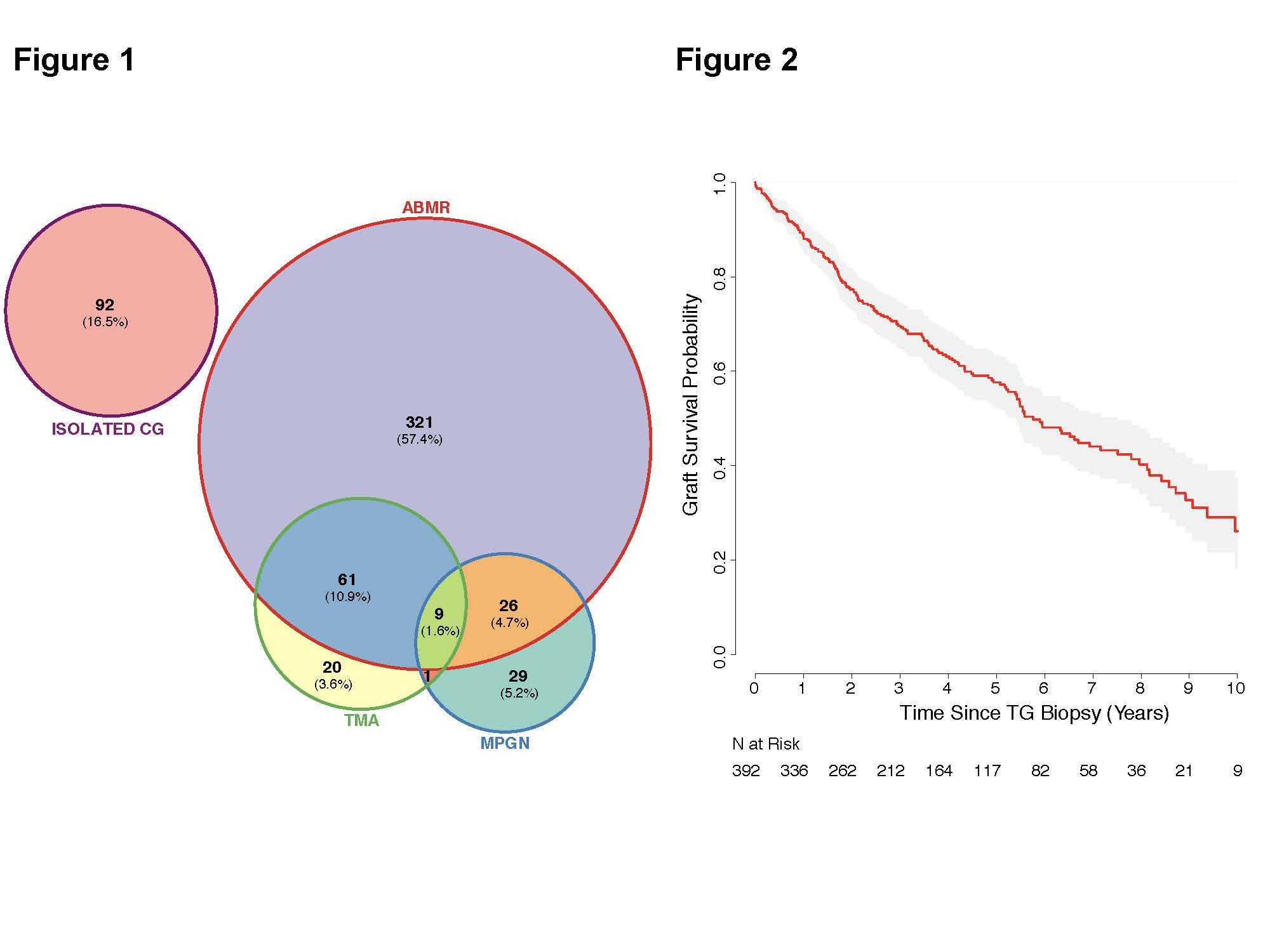
Identifying the Specific Causes and the Determinants of Outcome in Kidney Recipients with Transplant Glomerulopathy: A Multicenter Study
Olivier Aubert1, Sarah Higgins1, Jean-Paul Duong1, Denis Viglietti1, Marc Raynaud1, Banu Sis1, Luis Hidalgo1, Marion Rabant1, Michael Mengel1, Denis Glotz1, Christophe Legendre1, Patricia Campbell1, Carmen Lefaucheur1, Alexandre Loupy1.
1Paris Translational Center for Organ Transplantation, Paris, France
Background: Understanding the specific causes of TG and its long-term consequences at population scale is lacking.
Methods: This study includes all kidney allograft biopsies performed between January 2004 and January 2014 in three French referral centers and one Canadian center showing TG (Banff cg score≥1 by light microscopy). All TG cases were extensively phenotyped and systematically assessed using light microscopy, immunohistochemistry (IH), immunofluorescence (IF), together with circulating anti-HLA-DSA at the time of biopsy.
Results: Among the 8,207 post-transplant allograft biopsies performed during the inclusion period, 552 (6.7%) presented with double contours and corresponded to 385 patients. Three predominant overlapping etiologies accounted for 466 (84.4%) cases. 417 biopsies showed antibody-mediated injury (75.5%), 90 biopsies showed TMA (16.3%), 65 showed MPGN (11.8%), while 86 (15.6%) remained equivocal with no specific cause identified (Figure 1). The median time of TG diagnosis post-transplant was 33.18 months (IQR: 12.12 – 78.72 months). Kidney allograft survival after TG diagnosis was 69.4% at 3 years, 57.1% at 5 years, 43.3% at 7 years and 25.5% at 10 years (Figure2). After adjusting for donor, recipient and transplant characteristics, immunological and histological parameters, we identified the following independent factors associated with long-term allograft survival in patients with TG: eGFR (HR: 0.96; CI 95% (0.95-0.98); p<0.001) and proteinuria level (squared transformation) (HR: 2.16; CI 95% (1.76-2.65); p<0.0001) at the time of biopsy, deceased donor (HR: 1.62; CI 95% (1.11-2.40); p=0.016), delay between transplantation and TG diagnosis (log transformation) (HR:1.31; CI 95% (1.16-1.49); p<0.001), vasculitis Banff score (HR: 1.66; IC 95% (1.04-2.65); p=0.032) and TG biopsy with ongoing disease process (HR: 1.55; IC 95% (1.01-2.391); p=0.047).
Conclusion: Using a large cohort of kidney recipients with a diagnosis of TG and a systematic phenotyping, we identify three overlapping pathways in TG: ABMR, TMA and MPGN. The identification of the main independent determinants of TG prognosis may help improving risk stratification and define specific causes and disease process in patients with TG.

